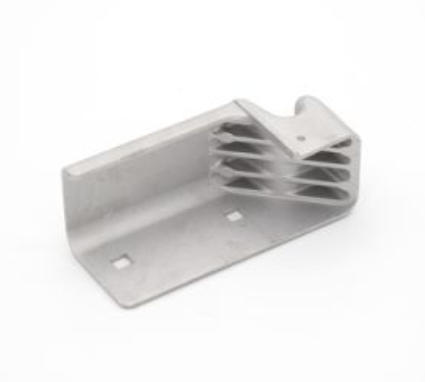Zamak 2 is another type of zinc alloy that comes with excellent casting characteristics, here we want to present its composition, properties, applications, and comparison with Zamak 3.

What Is Zamak 2?
Zamak 2 (ASTM AC43A), also known as Zinc Alloy 2, is a type of alloy that falls under the zinc-aluminum-magnesium (ZAMAK) alloy family. It is also known by its chemical composition, which typically consists of approximately 4% aluminum, 1% copper, 0.035% magnesium, and the balance is zinc. Zamak 2 alloy offers a good combination of mechanical properties, casting fluidity, and dimensional stability. It has relatively high strength, hardness, and wear resistance compared to other zinc alloys. Zamak 2 is commonly used in die casting applications where moderate strength and good casting characteristics are required. It is also known for its excellent finishing capabilities, making it suitable for applications that require surface treatments or plating.
Can zamak 2 be welded?
Zamak 2, as a zinc alloy, is not typically considered weldable in the traditional sense. Welding involves melting and fusing similar or compatible materials together, which is difficult to achieve with zinc-based alloys due to their low melting point. However, there are alternative methods that can be used to join Zamak 2 components or repair damaged parts. One such method is the use of specialized adhesives or epoxy resins designed for bonding zinc alloys. These adhesives can provide a strong and durable bond between Zamak 2 parts.
Why zamak 2 easy to cast?
– Fluidity: Zamak 2 exhibits good fluidity when molten, allowing it to fill complex molds and intricate details with ease. This characteristic makes it suitable for producing parts with intricate shapes, thin walls, and fine details.
– Low Melting Point: Zamak 2 has a relatively low melting point compared to other commonly used metals and alloys, making it easier to melt and cast. The lower melting point also reduces energy consumption during the casting process.
– Low Hot Cracking: Zamak 2 has good resistance to hot cracking, which is a common concern during casting. This property ensures that the alloy has good solidification and minimizes the risk of defects during the casting process.
– Good Dimensional Stability: Zamak 2 has good dimensional stability, meaning that it maintains its shape and size after solidification. This property is important for achieving accurate and consistent castings.
Zamak 2 Chemical Composition
Aluminum: 3.5-4.3%
Copper: 2.5-3.0%
Magnesium: 0.02-0.05%
Iron (max): 0.1%
Lead (max): 0.005%
Cadmium (max): 0.004%
Tin (max): 0.003%
Zinc: Remainder
Zamak 2 Material Properties
1. Physical properties:
– Density: around 6.7 g/cm³ (0.24 lb/in³).
– Melting Point: ranges from approximately 380°C to 390°C (716°F to 734°F).
– Coefficient of Thermal Expansion: around 27-30 µm/m°C (15-16 µin/in°F).
– Electrical Conductivity: a relatively low electrical conductivity compared to other metals.
2. Mechanical properties:
– Tensile Strength: typically around 285 MPa (41,300 psi). This measures the maximum stress the material can withstand before breaking under tension.
– Yield Strength: approximately 225 MPa (32,600 psi). This indicates the stress level at which permanent deformation occurs.
– Elongation: typically around 7%. It represents the extent to which the material can deform before fracturing.
– Hardness: a Brinell hardness of approximately 90 to 105 HB.
Differences Between Zamak 2 and Zamak 3
1. Chemical Composition. Zamak 2 has an obviously higher copper content than Zamak 3. Its higher copper content improves some of the mechanical properties but also affects the dimensional changes.
2. Material Properties. Zamak 2 generally exhibits the highest strength and hardness of the Zamak family. Zamak 3 has better casting fluidity, allowing it to fill more intricate molds and produce parts with higher complexity and thinner walls.
3. Cost. Zamak 3 is usually less expensive than Zamak 2 due to its lower aluminum content, which contributes to lower material costs.
4. Machinability. Both alloys have good machinability, but Zamak 3 tends to have better chip formation characteristics and is easier to machine.
5. Applications. Due to its higher strength and rigidity, Zamak 2 is often used in applications that require greater load-bearing capacity and structural integrity, such as automotive brackets, fittings, and small mechanical parts. Zamak 3 is commonly used in a wide range of applications including consumer goods, electrical connectors, plumbing components, and general-purpose parts that do not require as high strength as Zamak 2.

